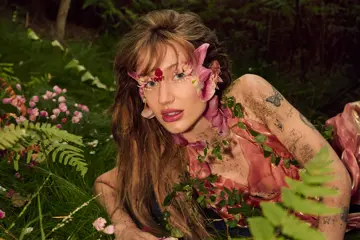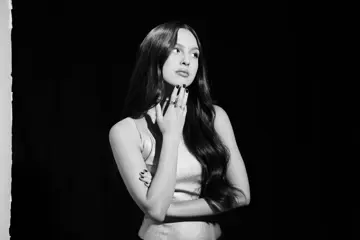One in five Australians experience symptoms of mental illness in any given year, 60 per cent of them won’t seek help, and 50 per cent of those who die by suicide have not made contact with a mental healthcare provider.
So, what’s a way to try and solve this? Two reports released in mid-November by Creative Australia maintain it is through arts and music.
Creative Australia is the Federal Government’s new principal arts investment and advisory body.
Its Chief Executive Officer, Adrian Collette, explained that its research showed, “Nearly half of Australians believe that creative activities and experiences helped with their mental health or wellbeing during the COVID-19 pandemic and that more Australians are attending arts and cultural events to improve their wellbeing.”
In one of the reports, Executive Director of Development and Partnerships, Dr Georgie McClean, stressed, “We need to be more proactive and develop new, evidence-based approaches to make sure those who need support can find ways to stay connected.
“The evidence is telling us that equipping artists and creative community development practitioners to work safely and well in this space can make a real difference.”
Arts On Prescription
Don't miss a beat with our FREE daily newsletter
The initiative is called Arts On Prescription. It develops programs that integrate music, arts and culture into health systems. Local health and social care systems can "prescribe" arts activities and music experiences to support their patients’ health and quality of life.
Not surprisingly, both arts/ music creators and consumers agreed. Almost nine in ten respondents were “very open” (42 per cent) or “somewhat open” (43 per cent) to it.
The most open were women aged 25–64, on middle incomes, held a bachelor’s degree or higher, and were in paid employment. The least open were men aged 45+, low-income earners, and those who did not hold a post-school qualification.
Music was at the top of engagement for 98 per cent of respondents, ahead of reading (80 per cent) and attending live or online arts events (61 per cent).
The Creating Wellbeing: Attitudes And Engagement With Arts, Culture And Health report found respondents agreed arts and music had a positive impact on their mental health (89 per cent), social health (84 per cent), physical health (70 per cent), family life (72 per cent), community life (75 per cent), and knowledge and skills (82 per cent).
"Creative participation helps us express ourselves, connect with each other and feel a sense of community,” Dr. McClean pointed out. “It has been shown to be highly effective in addressing social isolation, anxiety and depression and helping communities deal with the fallout of natural disasters.
“We can support the health sector with creative approaches that address the scale and cost of the problem and reach beyond our overburdened mental health system to connect those who need help."
How Music Makes Us Feel Good
According to the report, people who participate in the arts and music are either very happy or unhappy, and the happy ones tend to increase their participation.
66 per cent who regard themselves as happy are more likely to attend arts, music and cultural events.
The very happy people who go to arts and music events do so to relax. Those with levels of unhappiness want to connect with other humans.
The most common reasons to engage with the arts are enjoyment (53 per cent), social (26 per cent) and health and wellbeing (19 per cent).
People living with a chronic illness and/or disability are more likely to seek health and well-being benefits from engaging in arts activities (20 per cent compared to 17 per cent of people without chronic illness/disability).
Diving deeper into music’s specific impact, other reports have said that for players and listeners, it can stimulate the body’s natural feel-good chemicals, help energise their mood, solidify their self-image and identity, and provide an outlet to take control of their feelings.
Music helps musicians and fans work through problems in their lives by managing stress, expressing feelings or relating to them through song lyrics, enhancing memory and improving communication. It even alleviates pain as focusing on music reduces the brain’s perception of pain.
According to Creative Australia, “It is estimated that over two in five Australians aged 16-85 will experience a mental illness at some point in their lives. Mental health services cost the Australian Government $11.6 billion in 2020–21, while the cost of mental illness to the broader economy has been estimated to be $70 billion.”
Making It Work
The second report from Creative Australia, Creative Solutions: Training And Sustaining The Arts For Mental Health Workforce, identified the professional development needs and support structures needed to make sure that this work is safe and sustainable.
It underlined, “There is an urgent need for models of professional supervision and/or a community of care. At present, independent practitioners are often working in isolation, without organisational support or sufficient pastoral care, and in environments that are highly challenging and complex.”
It suggested mentoring as an important way of training, with sharing detailed knowledge.
Forum
On November 16, Creative Australia organised a forum at Parliament House in Canberra, co-hosted by Special Envoy for the Arts Susan Templeman, to explore how arts and creativity could contribute solutions to the mental health crisis.
Templeman noted, “Arts-based initiatives can help reduce the stigma that sadly still exists around mental health and help address the specific and diverse needs of people and communities.”
Katherine Boydell, Professor of Mental Health at the Black Dog Institute, threw her support behind Arts On Prescription.
“Whilst programs exist in pockets around the country, what is needed is greater coordination and upscaling – both to assist primary care workers in helping people access cultural resources and to improve access to these resources around the country,” she stated.
The summit emphasised any program must learn closely from the experiences of those who’d lived through trauma and considered suicide and also take in cultural differences.
“For First Nations communities, connection to country is grounded in wellbeing and the practice of culture through art and creativity,” observed Indigenous lead Marianne Wobcke at The Big Anxiety.
“Cultural healing programs need to be incorporated into our approach to mental health and wellbeing practice and policies.”
The guests also learned how the military has been using the arts to address trauma in its ranks for the past ten years.
Ian Drayton, Deputy Director of Innovation and Business Development at the University of Canberra, who developed and implemented the Arts for Recovery, Resilience, Teamwork & Skills (ARRTS) program with the Australian Defence Force, was one of the speakers.
“Despite having a profoundly positive effect, it is still on the periphery in terms of treatment, but there are great opportunities for this work to be extended to others working in first response situations, including the fire, ambulance, paramedic, and police services,” he stated.
If you or someone you know is suffering from depression, anxiety, suicidal thoughts or other mental-related illness, we implore you to get in contact with Beyondblue or Lifeline:
Beyondblue: 1300 224 636
Lifeline: 13 11 14
Suicide Call-Back Service: 1300 659 467
Beyondblue and Lifeline both also offer online chat/counsel. Check their respective websites for operational hours and details.















